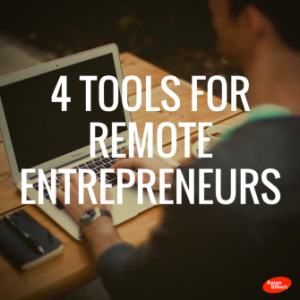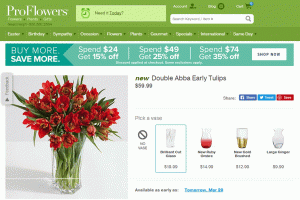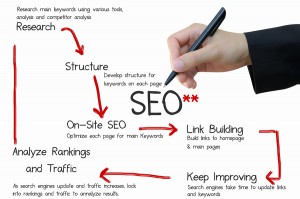Set up your brand for long-term success by focusing on data-informed insights, creator marketing and building brand advocates.
As we enter 2023, it’s time to look ahead and plan your digital marketing priorities for the rest of the year. Surely, it will be a year filled with innovation and creativity as technology brands worldwide strive to stay competitive in a rapidly changing landscape.
Reaching buyers today is difficult. With the many platforms and apps, it can take time to understand where your audience spends time online. Additionally, customer attention is at an all-time low, so campaign messages must be as concise and relevant as possible.
To address these challenges, three key elements should be at the forefront of any successful digital strategy this year:
- Using data to inform your strategy.
- Integrating creators into your programming.
- Operationalizing a brand advocacy program.
So, let’s dive deeper into what this will mean for your brand to achieve success in 2023.
1. Data-informed insights
Data and insights are often used interchangeably, but there is an important distinction between the two.
Data is raw, factual information that can be measured. It reflects an occurrence. For example, data in a Google Analytics dashboard might show that a paid advertisement resulted in 15K clicks to a landing page.
On the other hand, insights draw actionable conclusions from data. They explain why something “is the way it is” and offer advice to optimize future events. For example, an insight from the above data point might show that there were 15K clicks to the landing page after copy changes were made to the ad.
Data and insights are essential for any business looking to take its digital strategy to the next level. Therefore, companies must collect and analyze data from all sources — digital, social media and audience analytics. These data points provide more detailed context to understand the buyer’s journey and create targeted campaigns more likely to produce the expected results.
Digital analytics provides performance-based metrics based on a campaign in the market. It gives real-time insights into your campaign’s performance across digital media, search and other paid media activations. Let’s say clicks or conversions are trending down, a closer look at the data will help you identify and address the issue quickly, enabling you to adjust your campaigns accordingly.
Website analytics do the same but provide insights into how users find, interact and take action on a company’s website. If web traffic is down or you have a high bounce rate, a deep dive into the data should tell you why. Maybe it’s load time or the web copy is confusing. Either way, you can use this data to improve the user experience.
Social media metrics for paid and organic content are just as important when measuring performance. Track key performance indicators (KPIs) such as likes, shares, comments, reach, sales and leads across all platforms to get an idea of what types of content resonate best with your audience. These insights can inform future campaigns. You can create content tailored specifically for each platform based on what has been successful in the past.
Audience analytics is more research-based versus performance-based and happens before a campaign launches. It starts with building an audience of existing customers, prospects or a desired audience. Then, the data can provide actionable insights such as top media affinities, social channel preferences, attitudes and behaviors and conversational trends. The insights can inform media buying and campaign messaging throughout the buyer’s journey.
This enables you to develop integrated, cross-channel campaigns that stretch across public relations, social media, email campaigns, events and digital media, ensuring a consistent buyer experience.
Collecting data from multiple sources and making it actionable allows you to make informed decisions about your digital strategy, giving you an advantage over competitors who rely solely on intuition.
Technology companies like Audiense and Infegy provide solutions and capabilities to deliver these insights.
Dig deeper: Marketing analytics: What it is and why marketers should care
2. B2B creator marketing
The creator economy is now a part of every industry, reshaping how brands think about their digital campaigns. Even B2B and technology brands are prioritizing influencer partnerships. As a result, the creator economy will continue to grow and is expected to reach $ 47.2 billion over the next 10 years.
Collaborating with B2B creators effectively reaches new audiences and builds relationships with existing ones. By working with influencers, enterprises can tap into their networks and gain access to a wider audience that may not have been exposed to the brand’s messaging before.
Additionally, collaborating with creators allows for more authentic content creation and thought leadership, which resonates better with buyers who crave authenticity in their journey.
An enterprise tech company launching a new AI product might want to partner with an influencer to collaborate in creating a video series or a white paper. The influencer would lend credibility to the campaign by providing their insights into why the AI product is best-in-class. In turn, the company can leverage the influencer’s network while co-creating content that speaks directly to buyers, which traditional advertising methods often struggle to do effectively.
Another benefit of working with creators is increased engagement from existing audiences and potential buyers. They are more likely to act when they see a third party advocating for a product or service. This helps create stronger connections between customers and brands and drives long-term business growth.
Technology companies like Tagger and Onalytica can help marketers identify, engage and manage creators and influencers.
3. Operationalizing brand advocacy
In the early days of the web, brand advocacy was an important topic of conversation among the marketing community. Brands used technology to listen to customers and engage with them directly on social media channels. Likewise, community managers were on the front lines of customer interactions, creating content and advocating for the community.
That passion withered over the years and has been replaced with alternative ways like influencer marketing to reach audiences online. This is partly because social is more of a media channel than a community.
Influencer marketing still needs to be a priority, but not at the expense of brand advocacy, which is an invaluable asset for every business.
Brand advocacy happens whether you know about it or not. Customers may comment positively about your company, software, services or executives without being asked. When they see value in your products, they won’t be shy about sharing their experiences. Their feedback on your products and services can also help you innovate and improve.
Brand advocates help reach new audiences with minimal effort since existing customers already have direct experience with your products and want others to experience it too.
Additionally, having satisfied customers speaking positively about your technology will create trust among potential buyers who might not have heard of you before but now feel more confident in giving you a try due to positive reviews from other users.
Finally, brand advocates can boost sales by providing valuable insights into how your technology helps them solve their business problems and share them with the community.
Technology platforms like Influitive and Birdeye provide marketers with tools and solutions to help operationalize brand advocacy programs.
What’s ahead for digital marketing beyond 2023
The future of digital marketing will continue to focus on “smarter” personalization. Consumers expect brands to know their needs, preferences and interests before asking for them. As a result, companies must leverage AI, machine learning and predictive analytics to provide personalized experiences across the buyer’s journey.
Social media platforms like Instagram and TikTok will continue to grow for B2B and technology companies as younger generations are moving into the workforce, being promoted and making purchase decisions.
As we look ahead, it’s clear that digital marketing will continue to be an important part of any successful business strategy. By focusing on data-informed insights, creator marketing and building brand advocates, businesses can ensure they are well-positioned for long-term success.
The post Top 3 priorities for your 2023 B2B marketing strategy appeared first on MarTech.
MarTech(22)
Report Post








